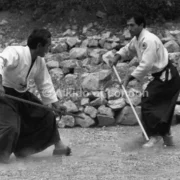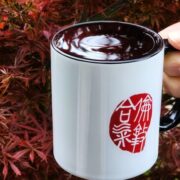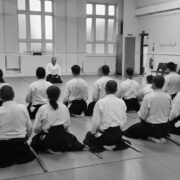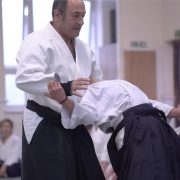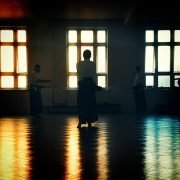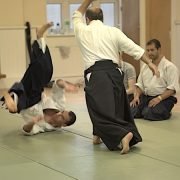Teaching – part 3
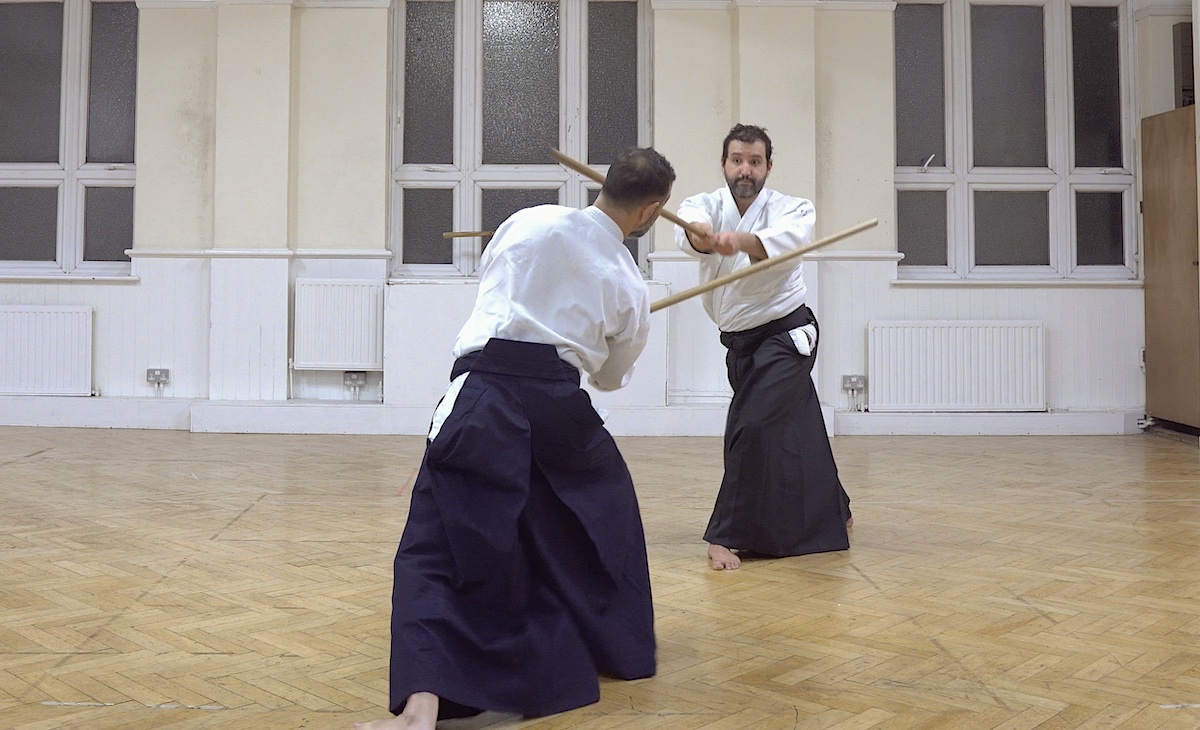
Reflecting on my journey, it’s been almost 50 years since I embarked on this quest. Throughout this time, life and martial arts have presented both challenges and triumphs. Initially, teaching was not on my radar; it wasn’t a path I consciously chose, even when others encouraged it. My hesitation stemmed from a deep belief that there was much more to Aikido than what my early training revealed. This conviction led me to dedicate myself to full-time training and, eventually, to teacher training, although the concept of teacher training programs didn’t cross my mind until I made the decision to train under Chiba Sensei. Even then, I wasn’t entirely convinced that teaching, or solely teaching, was my destined path.
Unexpectedly, I found myself as the chief instructor overseeing two dojos in my 20s, a responsibility bestowed upon me by Chiba Sensei, who entrusted me with the care of the South Western Aikikai, encompassing Santa Fe and Albuquerque in New Mexico. This was an immense honour, especially considering these dojos were established by Nakazono Sensei, another of the founder’s students. My role expanded as I began assisting Chiba Sensei in his California dojo, often managing it during his absences for weeks as he conducted seminars. My teaching journey also took me back to his former dojo in London.
My evolution as a teacher took a significant leap when I opened my own dojo a few years later. It was then that my approach to teaching began to deepen and evolve, marking another chapter in my journey with Aikido.
My initial commitment was to share my knowledge and to continue growing in Aikido. Over the following years, we saw an influx of new members, including a significant number from other dojos. Senior practitioners, many holding Dan ranks from other organisations, expressed their desire to join. This necessitated clarity; they were welcome, provided they were decisive in their choice. Departing one’s dojo is never simple, raising issues of loyalty, allegiance, and the bonds of friendship. Yet, we welcomed some truly remarkable individuals, alongside a few with unconventional perspectives. This presented an unforeseen challenge. My own training had been intensive, as a full-time Kenshusei and Uchi Deshi, focused solely on Aikido. However, these new members, despite their dedication, balanced careers and personal lives alongside their training, making it unfeasible to replicate the rigorous training regimen I had undergone. Nor was there any intention to recreate the exact conditions of my Kenshusei days. This dojo was set to sail a different course.
Interestingly, many arrived with preconceived notions of dojo operations and a superficial understanding of the Kenshusei program. Others arrived wary of ‘politics’ and the dynamics of teacher-student relationships, possibly due to past negative experiences. Despite my own background, I remained uninterested in dojo politics or personal tensions. My sole aim was to teach Aikido, seeing everything else as unnecessary baggage. The dojo was not just my passion but also my business, and I was fully prepared to innovate in every aspect to foster its development and ensure it attracted committed students. From a business standpoint, it was imperative for the dojo to be financially self-sustaining, especially in an expensive city. There was much work ahead.
It wasn’t long before I realised that teaching Aikido was about more than just the martial art. The majority of my students, both men and women, were sincere in their desire to learn, which made my job as their instructor much simpler. However, there were significant misconceptions about what Aikido is, the nature of martial arts, and even the role of a Sensei. The discipline is shrouded in pseudo-Japanese cultural lore, and though I was closely aligned with its traditions, I am not Japanese. Interestingly, a Japanese student, during my time learning from Chiba Sensei, remarked that “We, the Deshi, were more Japanese than the Japanese!” The reception I would receive from the broader Aikido community and my own students would introduce an additional layer to the training process. Many in the Aikido world were quick to dismiss me; I was once deemed “Not exotic enough.” A senior friend from the Karate world dismissed such critiques as “nonsense, you know your stuff.” To me, their rejection was a favour. Why would anyone sensible want to associate with individuals who ranged from mediocre to those engaging in cynical political manoeuvres, especially towards an ‘outsider’ like myself? Aikido was being diminished from various angles, including by those who claimed to hold it dear. Many possessed amateurish or insular attitudes, yet I am certain there were good individuals who, sadly, did not know what to make of me based on hearsay.
I possessed something pivotal, the very reason people arrived and, more crucially, why they remained for years. A young student once queried during our time in Bloomsbury, central London, “What did you receive from Chiba Sensei as a Deshi?” My response was straightforward: “Aikido.” It was as simple as that. My presence there hinged on this simplicity, and to endure the regimen, one had to either figure it out or depart; there existed no in-between. Regardless of nationality, ethnicity, gender or faith, working under a great master and persisting ensures understanding. Aikido would inevitably resonate with you. Leaving was always an option, should it become overwhelming or should my mind change. This holds true for some individuals who approach me, and indeed, a few have chosen to leave.
Teaching is about coaching, and effective coaching involves understanding people. I often tell my students, half-jokingly, that I thought my role was solely to teach Aikido, but it turns out I’m also here to learn about people. That’s a significant part of my lesson. Every individual comes to training with their unique motivations, principles, habits, and personal histories. Cutting through that, if possible, presents a challenge. Many people project their cultural backgrounds and personal perspectives, which is natural since no one is a “Tabula rasa” — an empty slate. For some, the fact that Aikido is deeply rooted in Japanese tradition, distinct from Western traditions, doesn’t immediately register. One of my brightest students, who holds a PhD, knew Aikido was Japanese but that was the extent of her curiosity. Despite her love for the training, she showed no interest in the cultural and historical context that shaped it. Her analytical mind struggled with the contradictions inherent in the art — concepts like strong versus weak, or slow versus fast, which convey much more than their literal meanings.
Our dojo sometimes receives visitors who dismissively regard our practice as “just another style.” One visitor, during an International Women’s Day seminar, confessed to finding our approach both confusing and intriguing. Despite claiming to be an experienced practitioner from another dojo, it was clear that the differences in our methods were challenging for her. This often stems not from political or stylistic disagreements but from a clash of egos, or simply because they’re not accustomed to our way of doing things.
In truth, there is no “style” in the conventional sense. It’s about the correct use of the body — a straightforward yet profound criterion for evaluating one’s Aikido. And this principle doesn’t apply solely to Aikido; it’s about how the body communicates during training more eloquently than any mental strategy.
I recall a student who boasted about his boxing skills, yet his movements betrayed a lack of genuine understanding. Speaking of boxing, I’ve always admired Muhammad Ali. Ron Lyle, one of Ali’s contemporaries, put it best when he said, “…because all of the guys that fought in the Ali era were great athletes. I was a great athlete in several sports. Ali, Foreman, we were all great athletes that could have flourished in another sport…” This highlights the importance of recognising and learning from exceptional individuals. While it’s true we may not all reach their levels of achievement, there’s immense value in striving to reach our own personal bests.
As a teacher, the challenge of how we perceive and internalise learning becomes clear. It involves not just talent, focus, and work ethic, but crucially, an openness of mind. However, I’ve repeatedly observed a resistance to change, leading me to ponder, “What internal battle is that individual facing?” There’s an odd form of cultural stereotyping associated with Aikido. On one side, there’s the belief that “Only the Japanese truly understand Aikido.” From my experience, this is far from the truth. Instructors with minimal knowledge compared to some of my seasoned colleagues under Chiba Sensei’s guidance are often elevated to celebrity status, an approach that is not only lazy but also shirks personal responsibility and critical self-examination.
Then there’s the perspective of non-Japanese, non-Asian individuals who judge Aikido with scant understanding of its rich heritage. I recall a student convinced of an underlying ‘algorithm’ to master Aikido, suggesting that there is a formulaic approach. There is but it’s rooted in Japanese methodology, built upon decades, even centuries of tradition. Yet, I’ve never seen anyone shortcut these methods and achieve excellence. Ironically, this student in search of a formula was far more skilled than he realised, but for some reason, he couldn’t confront his true capabilities.
The core issue is the reluctance to abandon familiar problem-solving strategies. Openness is paramount for learning, including recognising one’s ignorance. This requires emotional bravery rather than physical strength. It also involves letting go of preconceived notions and biases to genuinely ‘see’. I find despite the complex terminology and explanations, and essays like this, the sense of Aikido can only be truly understood through practice and experience.
Aikido stands at a peculiar crossroads, mirroring the society in which it must either thrive or perish. It finds itself caught between two opposing views: the pragmatic inquiry of whether it’s effective in real-world street fights or MMA scenarios—common, yet uninspired debates flooding social media—and the idealistic pursuit of it being a ‘safe space’ for reconciliation and harmony. Such polarised opinions often overlook the rich depth Aikido has to offer.
Criticism abounds, with poor Aikido demonstrations easily accessible, yet even footage of the great masters fails to escape the cycle of dismissive commentary. On one hand, skeptics question its practicality with a narrow lens, while on the other, enthusiasts yearn for it to embody ideals of peace and unity. This binary perception fails to grasp the full spectrum of Aikido’s potential.
The sentiment of not understanding or outright dismissing Aikido as nonsense is not uncommon. However, reminiscent of the “good old days” of television, where discontent with a program led to simply changing the channel or turning off the TV, today’s culture of critique often leans towards diminishing rather than constructive feedback. The encouragement here is to invest time and energy into passions that resonate deeply, rather than diminishing the interests of others. Life, already challenging, doesn’t benefit from unwarranted negativity.
While it’s true that some criticisms are valid, given the variable quality of Aikido demonstrated, the solution isn’t to dwell on the negative but to seek out or switch to channels that align with one’s values and interests. In essence, Aikido, like any discipline, warrants a more nuanced, understanding, and appreciative approach rather than reduction to mere stereotypes or arenas of contention.

